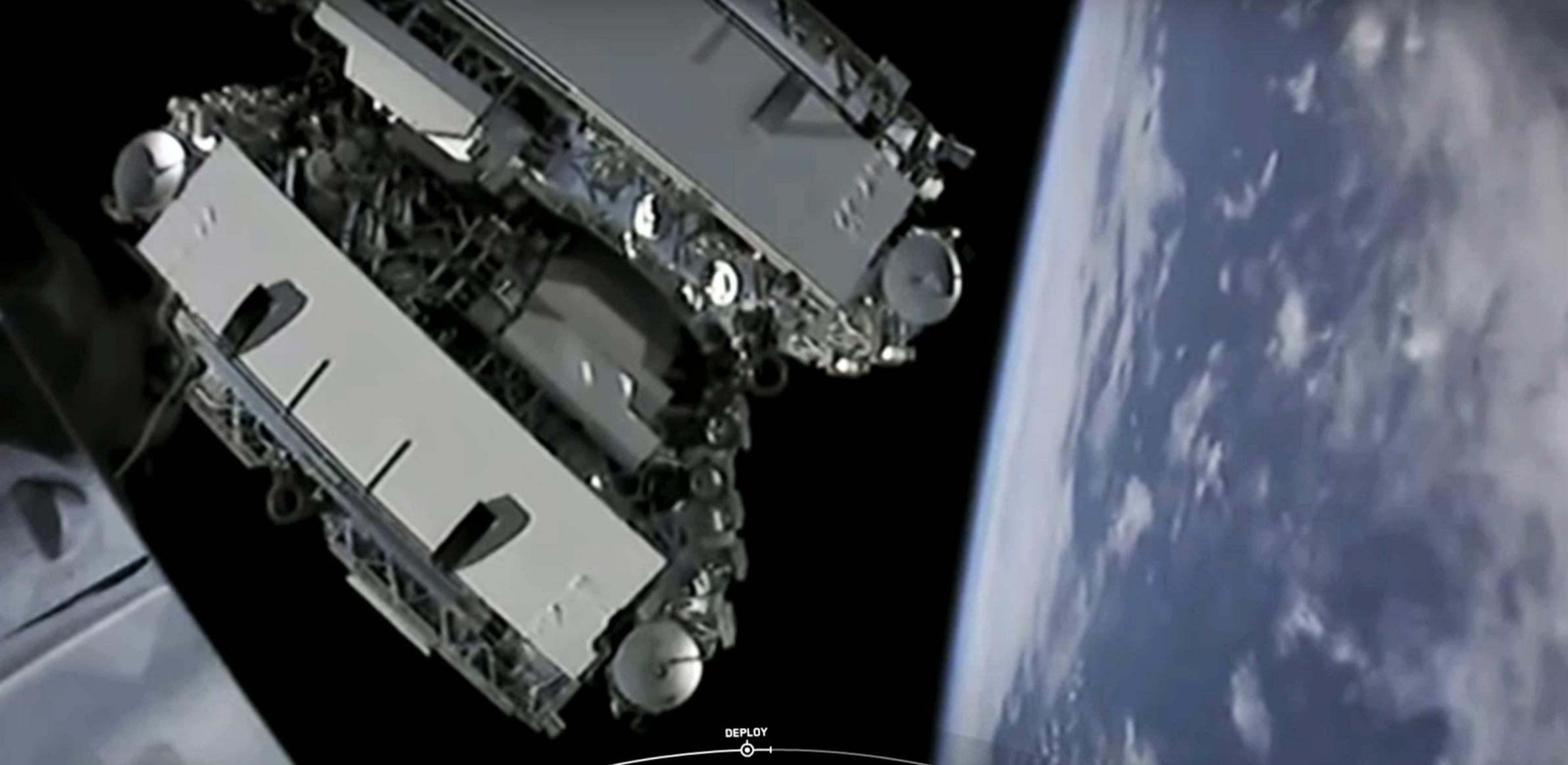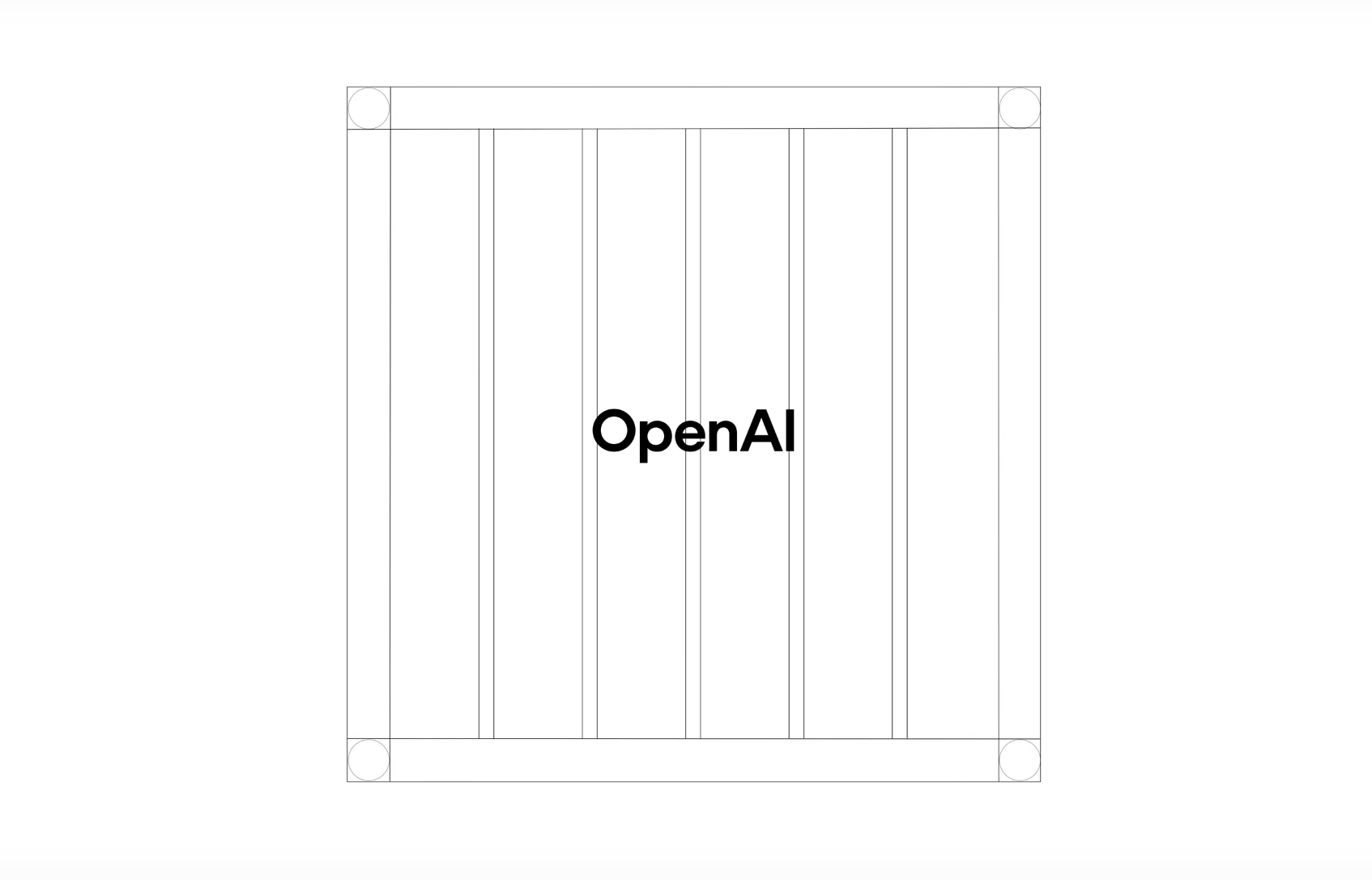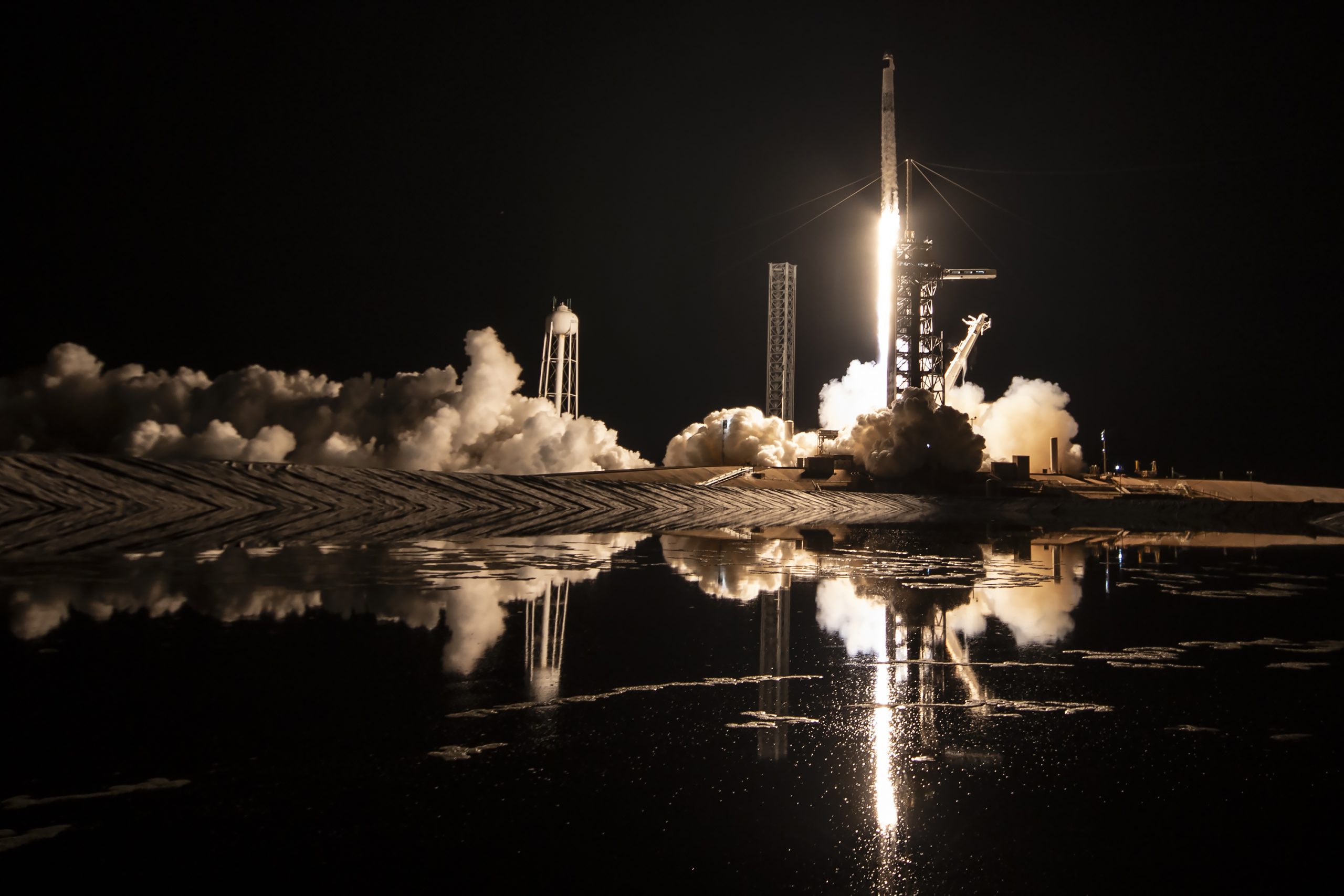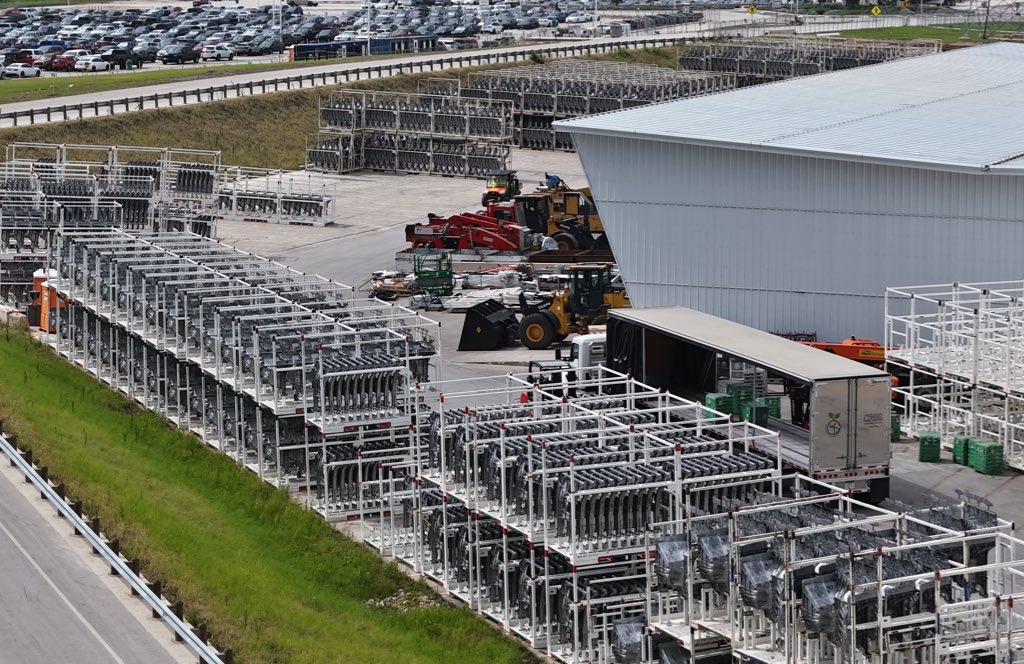

News
SpaceX's Elon Musk says Starlink user antennas will be like "UFOs on a stick"
SpaceX CEO Elon Musk has teased the first detailed description of the Starlink antennas (“user terminals”) customers will need to connect to the massive satellite internet constellation, revealing a few new and unexpected details about the critical hardware.
Although nearly all public focus is currently (and understandably) on the production and launch of Starlink satellites themselves, that perspective actually glosses over a second element of the constellation that is at least as important. Starlink, after all, is designed to delivered high-speed, low-latency broadband internet to customers around the world, and that service will not just magically appear in the houses of interested consumers. Similar to satellite TV, customers will gain access to their Starlink internet service with an antenna that will have to be installed somewhere on or around the premises.
The challenge that SpaceX faces with the grounded side of Starlink is that – unlike the geostationary satellites that provide satellite TV – satellites in low Earth orbit (LEO) are visible from a specific point on the ground for just a handful of minutes each. Whereas satellite TV dishes simply need to be pointed at one unmoving spot in the sky, Starlink ground antennas will need to constantly change where they are pointed (or at least track constantly-moving and changing satellites) and do so seamlessly and with incredible reliability.
A step further and even more importantly, while SpaceX unequivocally needs to make its Starlink user terminals extremely capable, simple, and reliable, it will also need to find a way to mass-produce millions (ultimately tens to hundreds of millions) of units and keep the cost to consumers unprecedentedly low. At least before Musk’s January 7th, 2020 comment, it was believed that Starlink user terminals would have to rely almost entirely on high-performance phased-array antennas, referring to antennas that are steered electronically – i.e. without physically moving.
100% phased-array steering would likely result in the best possible user terminal from the standpoint of reliability and performance. However, full phased-array antennas – while making rapid progress – are still extremely expensive to manufacture compared to more basic alternatives, meaning that it could be an immense challenge – possibly much harder than building and launching Starlink satellites themselves – to mass-produce affordable user terminals under that paradigm. It’s possible that SpaceX has actually come to the same conclusion and is choosing to compromise with its first-generation user terminals, prioritizing time to market and cost per unit at the expense of peak performance and optimal reliability.
Competitor OneWeb may actually have a step up on SpaceX on that front, having reportedly already made great progress developing an exceptionally cheap flat-panel phased-array antenna capable of at least decent throughput (10-50 Mbps). On January 7th, Musk revealed that the current iteration of Starlink user terminals look like a “thin, flat, round UFO on a stick” and features “motors to self-adjust [and ensure it’s at the] optimal angle to view [the] sky.”
The latter tidbit came as a bit of a surprise, given that nearly all cutting-edge phased-array antennas in development feature flat-panel designs and mounting hardware and pointedly avoid mechanical steering – one of the great benefits of phased arrays. It’s ultimately unclear what purpose a mechanical pointing motor would serve on a Starlink user terminal. If the terminal is centered around a true phased-array antenna, mechanical steering would be an almost vestigial addition. However, it’s possible that SpaceX has found a way to hybridize electronic (phased-array) and mechanical steering to produce user terminals that are exceptionally cheap and high-performance at the cost of a reliability risk (moving parts).
Ultimately, it looks like we will find out much sooner than later how exactly SpaceX’s Starlink user terminals work, among other details. Musk says that Starlink will be able to start serving customers in Canada and the Northern US with as few as four additional Starlink launches, meaning that some form of beta test could begin after Starlink V1 L6.
As of now, SpaceX has 1-2 more Starlink missions scheduled to launch later this month. If SpaceX averages two launches per month, Starlink could be serving its first customers as early as March or April 2020.
Check out Teslarati’s Marketplace! We offer Tesla accessories, including for the Tesla Cybertruck and Tesla Model 3.
News
These Tesla, X, and xAI engineers were just poached by OpenAI
The news is the latest in an ongoing feud between Elon Musk and the Sam Altman-run firm OpenAI.

OpenAI, the xAI competitor for which Elon Musk previously served as a boardmember and helped to co-found, has reportedly poached high-level engineers from Tesla, along with others from xAI, X, and still others.
On Tuesday, Wired reported that OpenAI hired four high-level engineers from Tesla, xAI, and X, as seen in an internal Slack message sent by co-founder Greg Brockman. The engineers include Tesla Vice President of Software Engineering David Lau, X and xAI’s head of infrastructure engineering Uday Ruddarraju, and fellow xAI infrastructure engineer Mike Dalton. The hiring spree also included Angela Fan, an AI researcher from Meta.
“We’re excited to welcome these new members to our scaling team,” said Hannah Wong, an OpenAI spokesperson. “Our approach is to continue building and bringing together world-class infrastructure, research, and product teams to accelerate our mission and deliver the benefits of AI to hundreds of millions of people.”
Lau has been in his position as Tesla’s VP of Software Engineering since 2017, after previously working for the company’s firmware, platforms, and system integration divisions.
“It has become incredibly clear to me that accelerating progress towards safe, well-aligned artificial general intelligence is the most rewarding mission I could imagine for the next chapter of my career,” Lau said in a statement to Wired.
🚨Optimistic projections point to xAI possibly attaining profitability by 2027, according to Bloomberg's sources.
If accurate, this would be quite a feat for xAI. OpenAI, its biggest rival, is still looking at 2029 as the year it could become cash flow positive.💰 https://t.co/pE5Z9daez8
— TESLARATI (@Teslarati) June 18, 2025
READ MORE ON OPENAI: Elon Musk’s OpenAI lawsuit clears hurdle as trial looms
At xAI, Ruddarraju and Dalton both played a large role in developing the Colossus supercomputer, which is comprised of over 200,000 GPUs. One of the major ongoing projects at OpenAI is the company’s Stargate program,
“Infrastructure is where research meets reality, and OpenAI has already demonstrated this successfully,” Ruddarraju told Wired in another statement. “Stargate, in particular, is an infrastructure moonshot that perfectly matches the ambitious, systems-level challenges I love taking on.”
Elon Musk is currently in the process of suing OpenAI for shifting toward a for-profit model, as well as for accepting an investment of billions of dollars from Microsoft. OpenAI retaliated with a counterlawsuit, in which it alleges that Musk is interfering with the company’s business and engaging in unfair competition practices.
Elon Musk confirms Grok 4 launch on July 9 with livestream event
News
SpaceX share sale expected to back $400 billion valuation
The new SpaceX valuation would represent yet another record-high as far as privately-held companies in the U.S. go.

A new report this week suggests that Elon Musk-led rocket company SpaceX is considering an insider share sale that would value the company at $400 billion.
SpaceX is set to launch a primary fundraising round and sell a small number of new shares to investors, according to the report from Bloomberg, which cited people familiar with the matter who asked to remain anonymous due to the information not yet being public. Additionally, the company would sell shares from employees and early investors in a follow-up round, while the primary round would determine the price for the secondary round.
The valuation would represent the largest in history from a privately-owned company in the U.S., surpassing SpaceX’s previous record of $350 billion after a share buyback in December. Rivaling company valuations include ByteDance, the parent company of TikTok, as well as OpenAI.
Bloomberg went on to say that a SpaceX representative didn’t respond to a request for comment at the time of publishing. The publication also notes that the details of such a deal could still change, especially depending on interest from the insider sellers and share buyers.
Axiom’s Ax-4 astronauts arriving to the ISS! https://t.co/WQtTODaYfj
— TESLARATI (@Teslarati) June 26, 2025
READ MORE ON SPACEX: SpaceX to decommission Dragon spacecraft in response to Pres. Trump war of words with Elon Musk
SpaceX’s valuation comes from a few different key factors, especially including the continued expansion of the company’s Starlink satellite internet company. According to the report, Starlink accounts for over half of the company’s yearly revenue. Meanwhile, the company produced its 10 millionth Starlink kit last month.
The company also continues to develop its Starship reusable rocket program, despite the company experiencing an explosion of the rocket on the test stand in Texas last month.
The company has also launched payloads for a number of companies and government contracts. In recent weeks, SpaceX launched Axiom’s Ax-4 mission, sending four astronauts to the International Space Station (ISS) for a 14-day stay to work on around 60 scientific experiments. The mission was launched using the SpaceX Falcon 9 rocket and a new Crew Dragon capsule, while the research is expected to span a range of fields including biology, material and physical sciences, and demonstrations of specialized technology.
News
Tesla Giga Texas continues to pile up with Cybercab castings
Tesla sure is gathering a lot of Cybercab components around the Giga Texas complex.

Tesla may be extremely tight-lipped about the new affordable models that it was expected to start producing in the first half of the year, but the company sure is gathering a lot of Cybercab castings around the Giga Texas complex. This is, at least, as per recent images taken of the facility.
Cybercab castings galore
As per longtime drone operator Joe Tegtmeyer, who has been chronicling the developments around the Giga Texas complex for several years now, the electric vehicle maker seems to be gathering hundreds of Cybercab castings around the factory.
Based on observations from industry watchers, the drone operator appears to have captured images of about 180 front and 180 rear Cybercab castings in his recent photos.
Considering the number of castings that were spotted around Giga Texas, it would appear that Tesla may indeed be preparing for the vehicle’s start of trial production sometime later this year. Interestingly enough, large numbers of Cybercab castings have been spotted around the Giga Texas complex in the past few months.
Cybercab production
The Cybercab is expected to be Tesla’s first vehicle that will adopt the company’s “unboxed” process. As per Tesla’s previous update letters, volume production of the Cybercab should start in 2026. So far, prototypes of the Cybercab have been spotted testing around Giga Texas, and expectations are high that the vehicle’s initial trial production should start this year.
With the start of Tesla’s dedicated Robotaxi service around Austin, it might only be a matter of time before the Cybercab starts being tested on public roads as well. When this happens, it would be very difficult to deny the fact that Tesla really does have a safe, working autonomous driving system, and it has the perfect vehicle for it, too.
-

 Elon Musk1 week ago
Elon Musk1 week agoTesla investors will be shocked by Jim Cramer’s latest assessment
-

 News2 weeks ago
News2 weeks agoTesla Robotaxi’s biggest challenge seems to be this one thing
-

 Elon Musk1 day ago
Elon Musk1 day agoElon Musk confirms Grok 4 launch on July 9 with livestream event
-

 News2 weeks ago
News2 weeks agoWatch the first true Tesla Robotaxi intervention by safety monitor
-

 News5 days ago
News5 days agoTesla Model 3 ranks as the safest new car in Europe for 2025, per Euro NCAP tests
-

 Elon Musk2 weeks ago
Elon Musk2 weeks agoA Tesla just delivered itself to a customer autonomously, Elon Musk confirms
-

 Elon Musk2 weeks ago
Elon Musk2 weeks agoElon Musk confirms Tesla Optimus V3 already uses Grok voice AI
-

 Elon Musk2 weeks ago
Elon Musk2 weeks agoxAI welcomes Memphis pollution results, environmental groups push back















